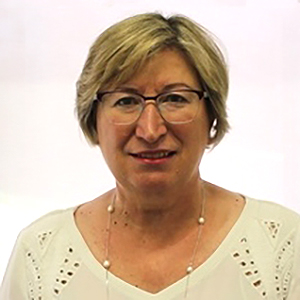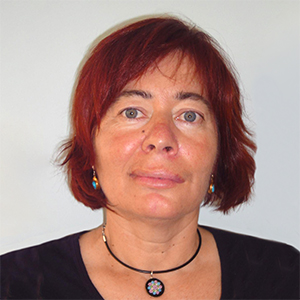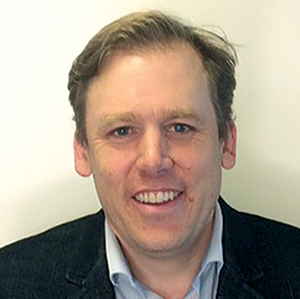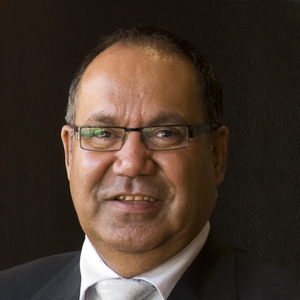If current predictions are correct, the world will lose half of its 7000 languages by the end of the century. That’s equivalent to one language dying every fortnight, wiping out not only a wealth of knowledge but the core of much of our history.
In 2019, which the United Nations has dedicated to raising awareness of indigenous languages, the world has an opportunity to address this crisis and even revive many of the languages sliding towards extinction.
 UniSA Associate Professor in Applied Linguistics, Dr Angela Scarino, says the preservation of indigenous languages – not just Aboriginal, but Maori, North American, Yiddish, Tok Pisin and countless others – is tied closely to culture, history, identity and a sense of belonging.
UniSA Associate Professor in Applied Linguistics, Dr Angela Scarino, says the preservation of indigenous languages – not just Aboriginal, but Maori, North American, Yiddish, Tok Pisin and countless others – is tied closely to culture, history, identity and a sense of belonging.
“Everything that we do in our social and professional lives is mediated through language and enriched by our cultural and linguistic diversity, yet Australia in particular is squandering the opportunity to become an increasingly multilingual society,” she says.
Multilingualism is standard in Africa, Asia and Europe, with most people speaking two, if not three, languages. Granted, geography plays a huge part in this, with multiple countries in close proximity, but Australia (unlike New Zealand) does not even formally recognise any of its Aboriginal languages.
In 1788 when Australia was colonised, about 250 Aboriginal languages were spoken in Australia. Today that number has dropped to 150 and all except 13 are endangered.
The reason for this is multi-layered. Part of it is mired in politics, but with Aboriginal languages tied to regions and clans, there is a question over which one would take formal status.
“In Aboriginal societies, languages belong to the people and are firmly rooted in the land,” Assoc Prof Scarino says. “Aboriginal custodians need to give permission for languages to be taught and, indeed, who will teach them. There are complex issues of ownership and major issues related to teacher training.”
This may complicate Aboriginal languages being given official status, but it shouldn’t prevent Australia from adopting a bilingual education policy in its schools, she argues.
“We shouldn’t be asking Aboriginal children to abandon their own languages in favour of an English-only curriculum. By the same token, if non-Aboriginal students were encouraged to learn Pitjantjatjara, Kaurna, Warlpiri, or another indigenous language, it would go a long way towards achieving understanding and reconciliation,” she says.
 UniSA Program Director of Languages, Dr Enza Tudini, says political will and resources are needed to maintain and reclaim Aboriginal languages.
UniSA Program Director of Languages, Dr Enza Tudini, says political will and resources are needed to maintain and reclaim Aboriginal languages.
“The cost of losing any language is immeasurable. We don’t just lose a language; we also lose the culture, including speakers’ knowledge of life, spirituality and their relationship with nature,” Dr Tudini says.
Language recovery is happening across Australia, albeit on a very small scale. UniSA teaches Pitjantjatjara and Yankunytjatjara via an annual summer school and Charles Darwin University offers Yolŋu Matha – both languages that are still being passed down to children.
Three languages are also now taught at university level: Kaurna (University of Adelaide), Gamilaraay (Australian National University and University of Sydney) and Wiradjuri (Charles Sturt University).
In 2019, Charles Darwin University and the Australian National University are also combining forces with Aboriginal people from Kakadu and Arnhem Land to teach the Bininj Kunwok language online.
 UniSA Associate Director: Regional Engagement (APY Lands), Dr Sam Osborne, says colonisation has had many detrimental impacts on Aboriginal languages.
UniSA Associate Director: Regional Engagement (APY Lands), Dr Sam Osborne, says colonisation has had many detrimental impacts on Aboriginal languages.
“The removal of Aboriginal children from their mothers, English-only social and education policies, and dispossession of land have been forced on Aboriginal people,” Dr Osborne says. “For the past 200 years, Aboriginal people have been systematically disconnected from their language, land and families.”
He references the 1968 Boyer lecture, After the Dreaming, in which Professor WEH Stanner tied the decimation of Aboriginal languages to colonisation.
“If you draw a line of 20-inch rainfall around Australia, that marks the complete obliteration of Aboriginal languages and people. Aboriginal people were displaced from their land to make way for agriculture. This approach separated people from their homes, their land, their way of life and subsequently their language.”
The impact has been significant, Dr Osborne says.
“Language is the glue and bedrock of culture, identity and belonging,” he says. “Aboriginal knowledge is tied to places, environments and ecologies and language reflects that.”
He welcomes the State Government’s commitment to bilingual schooling in the APY Lands by 2029.
“There has been minimal investment in Aboriginal languages since the 1980s but the world’s focus on indigenous languages in 2019 provides opportunities. The struggle will be to compete for attention with other priorities such as Closing the Gap, where Aboriginal languages are not included.”
 UniSA’s Dean of Aboriginal Engagement and Strategic Projects, Professor Peter Buckskin, has been pushing for the reinstatement of bilingual education in APY schools since its abolition in the late 1980s – a decision he says was selfish.
UniSA’s Dean of Aboriginal Engagement and Strategic Projects, Professor Peter Buckskin, has been pushing for the reinstatement of bilingual education in APY schools since its abolition in the late 1980s – a decision he says was selfish.
“If school curriculums in the APY Lands were taught in the students’ first language, it would markedly improve literacy and numeracy levels,” he says.
“Australia has a long way to go in recognising Aboriginal languages in the national education system. They need to be treated with the same respect as English, particularly in schools where most students speak Pitjantjatjara or Yankunytjatjara as their first language.
“We appreciate that English is the language of power, but for a multi-language speaker, if they’re not competent in their first language, it’s very hard to learn new concepts in a second language.”
Prof Buckskin says Aboriginal languages – along with history and culture – need to be embedded in the national curriculum.
“Things are moving in the right direction, but progress is slow,” he says.
Why language speaks volumes

Ni hao, hola, hello, namaste, marhabaan!
Australians may be surprised to learn that Mandarin is the most widely spoken language in the world with about one billion native speakers, followed by Spanish with an estimated 400 million speakers.
The 360 million native English speakers are third in the pecking order, ahead of Hindi and Arabic speakers, yet there seems to be tacit agreement that English is the “language of power” and carries weight in the business world.
This fact alone could explain the massive decline in language learning among Australian students in the past decade, a trend which leaves us at the bottom of the Organisation for Economic Cooperation and Development (OECD) pack.
According to UniSA applied linguistics expert Associate Professor Angela Scarino, people fundamentally agree that multilingualism is a good thing, but that thinking is not being translated into action in Australia.
“In the past 25 years there have been no less than 60 state and federal government reports recommending more language learning, but it is just not happening,” Assoc Prof Scarino says.
“In South Australia, 10 years ago about 14 per cent of Year 12 students learned a language. Now we would be lucky if it is five or six per cent. The reduction in the number of subjects studied in the last year of school is at least partly the cause, with languages falling by the wayside.”
This is despite widespread recognition of the value of learning a second or even third language in a globalised world where multiple languages are considered an asset.
A 2016 report by the Foundation for Young Australians found a 181 per cent increase in demand for bilingual skills across more than four million job advertisements. While many students in OECD countries are graduating with two and three languages, Australia is not even in the hunt.
A stark truth is that learning a language is hard. It takes time and effort, particularly as an adult. In Europe, 94 per cent of secondary school students learn English and almost 60 per cent are learning two or more foreign languages. In Australia, fewer than 10 per cent graduate from high school with a second language.
The key is to introduce students to a foreign language at primary school level, according to Dr Enza Tudini, UniSA’s Program Director of Languages in the School of Education.
“Children learn languages with ease if they start intensive language learning from preschool. There’s no better way to help their cognitive development,” she says.
Both academics support the reinstatement of five subjects at South Australian Certificate of Education (SACE) level to encourage the take-up of languages.
“It is imperative that we catch up with the rest of the world,” Dr Tudini says. “All the research points to a connection between language learning and literacy, yet Australia is not getting the message.”